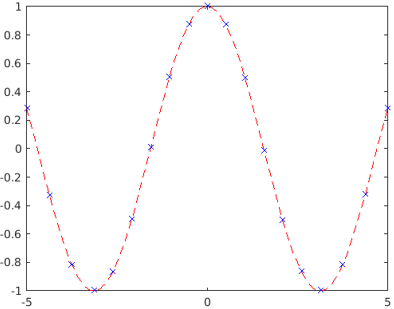Fplot Color
Changing color: The 'color' command, abbreviated to co, works in the same way as the marker command. To see a list of available colors, type co? And to change the color of the second vector from its default (red) to dark blue (color no.4), type: PLT co 4 on 2 How to delete a panel from a plot: Two steps are involved. Marker fill color, specified as 'auto', an RGB triplet, a hexadecimal color code, a color name, or a short name. The 'auto' value uses the same color as the MarkerEdgeColor property. For a custom color, specify an RGB triplet or a hexadecimal color. Of course, if you want separate x and y values for your color classes, then you can have datx and daty, etc. An alternate approach would be to tack on an extra column specifying what color you want (or. Fplot(,LineSpec) Linespec is used to customize the plot presentation by customizing set the line color, marker symbol, and line styleetc. Fplot(,Name,Value) Used to set property ‘Name’ with the value ‘Value’ for the plot: fplot(ax,) Used to create plot with the newly defined axes ax, instead of default ones: p = fplot. Fplot uses adaptive step control to produce a representative graph, concentrating its evaluation in regions where the function's rate of change is the greatest. Examples Plot the hyperbolic tangent function from.
Plot Color Octave
A thin wrapper for matplotlib


Fplot's goal is to provide simple syntax for plotting functions, with sensibledefaults. Matplotlib is powerful, but has awkward syntax, odd default display settings,and requires setting up data arrays manually. Making pretty function plots requiresmultiple lines of code. Fplot aims to fix this; it's especially suited for visualizingfunctions when learning math.
Python 3 only.
Included functions
- plot: One input, one output.
- parametric: One input, two or three outputs. If three, use a 3d graph.
- contour: Two inputs, one output.
- surface: Two inputs, one output.
- vector: Two inputs, two outputs.
- vector3d: Three inputs, three outputs.
- polar: One input (angle), one output (radius)
Bonus functions
- plot2: Smoothed API for matplotlib 2d plotting that works properly in Jupyter notebooks. ie syntax like plt.plot, which doesn't work properly in Jupyter. Arguments: (args, marker='b-', linewidth: float=2.0, grid: bool=False, color: str=None, title: str=None, equal_aspect: bool=False, style: str=None, show: bool=True)
- imshow: Like plot2, but as a replacement for plt.imshow.

Installation
Basic documentation
The only required arguments for fplot funcs are the function to plot, and themin and max ranges. Example optional keyword arguments are shown. Example outputis shown in the link above.

For most plotting functions, you can plot multiple functions at once by passinga list or tuple as the first argument.
Show a graph (1 input, 1 output)
Show a contour plot (2 inputs, 1 output)
Show a surface plot (2 inputs, 1 output)
Show a 2d parametric plot (1 input, 2 outputs)
Show a 3d parametric plot (1 input, 3 outputs)
Show a 2d vector plot (2 inputs, 2 outputs)
Show a 3d vector plot (3 inputs, 3 outputs)
Show a 2d polar plot (1 input, 1 output)
Example of an interactive plot with Ipython widgets in Jupyter notebook
Plot Color In R
- show: Defaults to True. Instantly display the plot. If False, return the axis object.
- resolution: Controls how many points to draw, based on function input. Higher resolutionallows more zooming, but may lower performance.
- color: (ie line color)
- linewidth: line width.
- y_min and y_max: (only for 2d input)
- theta_min and theta_max (only for polar plots)
- style: (ie from plt.use.style())
- grid: defaults to True
- equal_aspect: defaults to False
- title: Shown at the top of the plot
- stream: vector plot only; show a stream plot if True
- contours: surface plot only; show contour plots along each axis if True
- num_contours: contour plot only; set number of contour lines to draw. Defaults to 10.